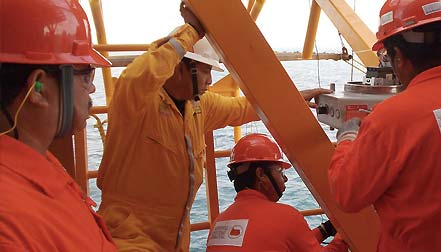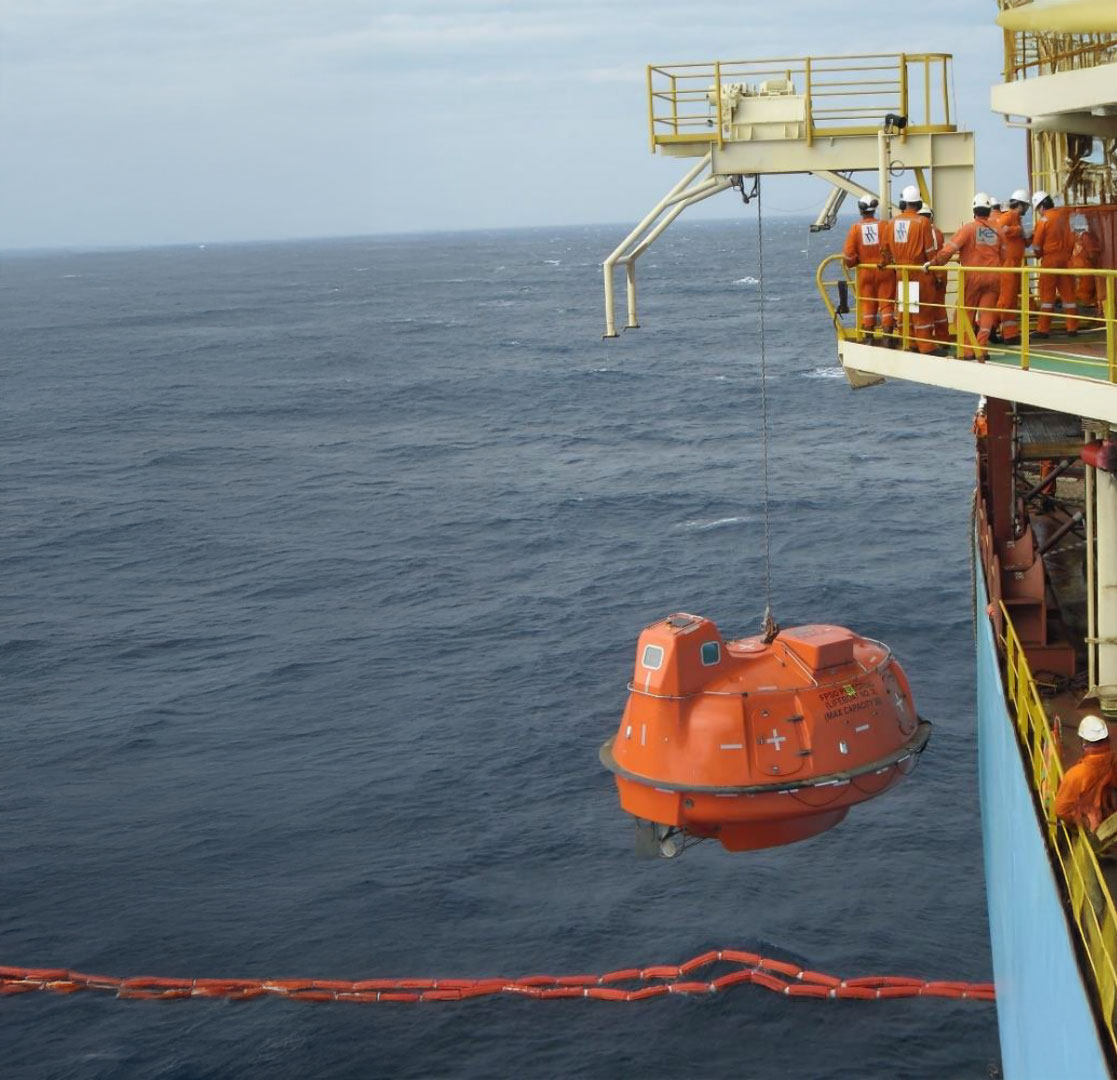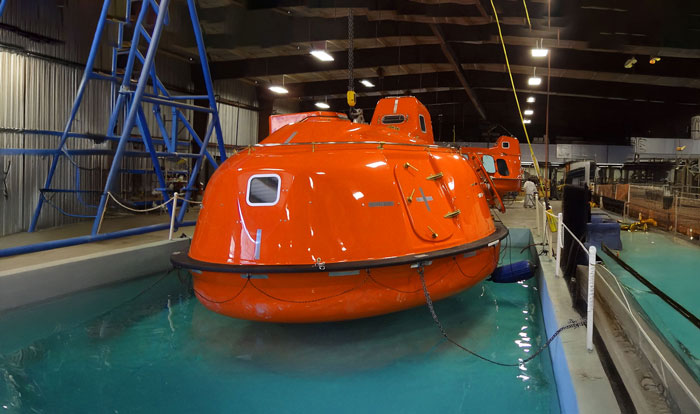Big People in Lifeboats
What Offshore Operators Need to Do Now
Source: Offshore Major Accident Regulator
Offshore Information Sheet 1/2025 (review due September 2028)

Why this matters
The average size and weight of UK offshore workers have increased. That means the assumed design weight and space allowances that many installations use for lifeboats and other lifesaving appliances (LSA) may no longer be valid. If you don’t update your calculations and provisions, you risk overloading lifeboats, seating failures, rescue bottlenecks, and non-compliance.

The Findings That Are Redefining Lifeboat Safety in 2025
- Average worker weight has risen - OEUK’s 2024 analysis of 38,933 personnel shows an average of 96.56 kg (normal clothing, no PPE). About 33% are over 100 kg and 5% over 125 kg.
- Shoulder width is up - Average 49.56 cm. Many SOLAS-compliant lifeboats allocate 43 cm or 48 cm per seat, creating real fit issues.
- One-size-fits-all is out - The old 98 kg design weight from 2008 is no longer a blanket answer. Dutyholders must recalculate design weights using current data and their actual installation context.

What HSE expects dutyholders to do
- Recalculate design weights for all evacuation and escape systems using best available data
- Use OEUK 2024 dataset or at least 3 months of your installation’s Vantage data.
- Include PPE weight appropriate to the system:
- TEMPSC - lifejacket minimum
- Life-rafts - immersion suit + lifejacket (unless suit is lifejacket-free by design)
- Physically weigh lifeboats unladen to confirm true baseline weight and detect any GRP or buoyancy foam issues.
- Document the method and numbers in your PFEER assessments and safety case. Review periodically.
- Adjust lifeboat and life-raft capacity if the new design weight reduces the allowable POB
- Options if SWL would be exceeded:
- Downgrade seating capacity
- Remove non-essential mass (with justification)
- Replace lifeboat and launch system
- Revalidate existing systems for higher loads with competent engineering and OEM input
- Obtain flag-state acceptance where applicable and consult your IV.
- Options if SWL would be exceeded:
- Check fit and restraints
- Verify seat width and harness length for larger personnel in full PPE.
- Trial a seating pattern that alternates larger and smaller personnel. Mark seats if needed.
- Confirm seat and restraint load ratings - over 100 kg for SOLAS seats and 150 kg for DNV E-406 lifeboats. Strengthen where necessary.
- Plan for loading and trim
- Train coxswain, assistant, and muster checker on the fastest safe loading order for larger personnel.
- Consider trim effects - larger personnel may be better seated aft on some TEMPSC. Consult OEM for freefall boats.
- Update related LSA
- Life-rafts and davits - recheck capacities using revised design weight.
- Marine evacuation systems and chutes - confirm chute clearances for girth + PPE and verify new raft capacities with OEM.
- Personal descent devices - confirm device and frame ratings, plus harness sizes.
- Medical provisions - ensure bariatric-capable stretchers, slide sheets, transfer boards, and trained teams.
- ERRV rescue and recovery checks
- Reassess LRRS capacity vs the revised design weight. A full complement of casualties plus crew may exceed limits - adjust recovery numbers and validate in trials with your ERRV provider.
- Interim measures
- Short-term reallocation of seats or alternative lifeboats may be acceptable under PFEER Reg 15, subject to risk assessment under PFEER Reg 5. Consult HSE before changes.
- Safety case and material changes
- Decide if changes are material (e.g., redundancy standards, weight management processes, total POB).
- Capture in safety case submissions, reviews, combined ops notices, and performance standards as required.
Simple explainer - how to set your design weight
HSE points to the OEUK statistical method.
In short:
- Design weight (WSM-95) = population average (μ) + PPE + statistical allowance
- Statistical allowance accounts for smaller group sizes in a lifeboat:
- Use z = 1.645 (95% one-sided) and your standard deviation (σ), divided by sqrt(N) where N is seats.
- Example outcome from OIS 1/2025: a 60-person lifeboat with updated inputs reduced from 60 to 57 seats to keep within SWL.
Tip: Because worker weight trends upward, consider a modest forward margin in your design weight. Reassess periodically.
Practical 30-day action plan
Week 1
- Pull last 3-6 months of Vantage data
- Confirm PPE specs per system
- Book unladen lifeboat weigh-in
Week 2
- Calculate design weights
- Draft capacity impacts for TEMPSC, life-rafts, MES, ERRV LRRS
- Identify gaps in seats, restraints, and PPE
Week 3
- Meet OEM + IV + flag state on options
- Decide on immediate mitigations vs upgrades vs revalidation
- Trial seating pattern and loading drills with larger personnel in PPE
Week 4
- Update PFEER assessments and safety case where needed
- Amend performance standards and training materials
- Schedule periodic rechecks and monitoring
Frequently asked questions
No. You can use your installation’s Vantage data if you have at least 3 months of complete records. OEUK data remains acceptable if you prefer a sector-wide baseline.
Engage the OEM to re-rate or replace restraints and identify sufficiently strengthened positions to accommodate heavier personnel across all boats.
Possibly, if justified by risk assessment and OEM guidance, and if it doesn’t compromise required provisions or stability/self-righting.
Potentially, under PFEER Reg 15, if risks are ALARP and discussed with HSE. Treat as short-term only while permanent fixes progress.
Bottom line
- Worker size and weight have increased.
- Your old design weights and seat provisions may no longer be compliant.
- Recalculate, verify, and document - then adjust capacities, hardware, and procedures.
- Build in periodic reviews so you don’t fall behind the curve.
Are you facing challenges upgrading your FPSO lifeboat capacity to meet increased POB and new weight guidelines?
- jordan robertson
